#Photography by James VanDerZee
Text

Evening Attire
Photography by James VanDerZee
gelatin silver print, 1922
#James VanDerZee#art#artist#photography#Evening Attire#gelatin silver print 1922#Photography by James VanDerZee#beautiful
270 notes
·
View notes
Text
Monday Photography Inspiration - James VanDerZee
Monday Photography Inspiration – James VanDerZee
“Somebody would come in and say, “I never take a good picture”. I’d say, Why not? You’ve got two eyes, a nose, and a mouth like everybody else.” – James VanDerZee
James Van Der Zee was an American photographer was born in Lenox, Massachusetts in 1886. He was known to have produced the most comprehensive documentation of the period. Among his most famous subjects during this time were Marcus…

View On WordPress
#African American photographer#black and white photography#black photographer#inspiration#inspiration of the week#inspirational photographers#inspirations#inspiring photographers#James VanDerZee#Monday inspirations#monday&039;s inspiration#photography art inspiration#photography inspirations
6 notes
·
View notes
Photo

In 1916, James VanDerZee opened the Guarantee Photo Studio in New York City’s Harlem neighborhood, and it went on to become the “go-to” portrait studio for many Harlem residents. VanDerZee’s pictures both in out and his studio captured the stories of the changing neighborhood, the joys of family, and the emotions and dreams of the people he photographed. This picture was taken in his own home. The photographer stands next to his wife, Gaynella, who holds one of her deeply loved cats. Around them are walls almost entirely covered with artwork—mostly photographs by VanDerZee himself—and objects that tell us about the comforts of home as well as the success of the couple’s photography business.
"Self-Portrait with Gaynella," 1954, by James VanDerZee © Donna Mussenden Van Der Zee
#Self-Portrait with Gaynella#james vanderzee#african american art#african american artist#photography#art#art museum#philadelphia#philadelphia art museum#philamuseum#philadelphia museum of art#philly art museum#philly museum#philly
54 notes
·
View notes
Photo

Of all of Deborah Willis’ case-specific investigations from her book, “Picturing Us,” the one that most resonated with me was the James VanDerZee photograph, “Raccoon Couple in Car, 1932.” Willis not only explains brilliantly explains the composition of the photograph, what it captures, but also recalls her experiences first seeing the photograph at the Metropolitan Museum of Art, and how it made her feel. The Harlem Renaissance was generally considered to be a monumental artistic and social movement for both the African-American community and artistic communities at large. Willis is right to wonder about the newly arrived migrants from the South, and if they were “invisible” in VanDerZee. I have a personal interest in the historical issues with representation and publication of photography, and am very familiar with images of African-Americans and Africans that were popular in the nineteenth century through my interest in nineteenth-century art. However, the image I chose today is from a different historical narrative. Willis remembers of the “Raccoon Couple in Car, 1932,” “As I looked at the photograph, I romanticized this period in history through VanDerZee’s portrayal of the couple. In the stories I heard about it while I was growing up, Harlem was a source of pride. The long oral narratives by my parents, aunts, uncles, and their friends could keep me spell bound for hours.” I had a similar personal experience with the work of Tom Bianchi and his polaroids of the largely gay community that spent their summers in The Pines on Fire Island. Polaroids have historically been cheap, and have not had the same lasting attention as fine prints, yet they are nevertheless valuable in documenting a historical narrative, particularly if it is one you feel a part of. While his images range from the casual snapshot to staged erotica, this specific image of one man on the beach with this lover documents a more tender moment in the photographer’s oeuvre. That this specific photograph holds a very personal resonance about a specific encounter is, for me, an entirely different story. What makes this image powerful to me today, as it did when I first saw it years ago, is that is a gay image; that is to say, this is an image of a gay couple that is meant to be gay. For much of the history of photography, the camera has had an odd relationship with its gay audience. Dating back to the images of body builders, strongmen, and carnival wrestlers that were originally published in health journals in the late-nineteenth century, to the “classical” nudes of Horst by his lover Hoyningen-Huene, and the nudes and semi-nudes of WWII soldiers bathing, or smoking, or hanging out in the barracks, through to the advertising images of Bruce Weber and the editorial work of Herb Ritts which both blur the lines between the hyper-masculine and the homoerotic, these images appeal to a gay sensibility, but do not depict homosexual life or homosexual love. Bianchi’s work—some of which is of course celebrated for its erotic appeal—is at once art and also a beautiful and powerful historical document. This body of work was taken in the late 1970s and early 1980s, right before the AIDs epidemic would claim the lives of so many people, many of whom were shot by Bianchi. Like Willis, I had become accustomed to seeing images of ‘myself’ in a way that differs from how most others can easily access their own experiences and their histories through photography. So while I fully admit to romanticizing this image, I also accept that there is a darker history of being gay in America that is not represented in his photograph. But perhaps that is its power; despite all of the negative imagery that has been published of gay life, this image proves that I that I had a history that includes moments that—to borrow from Willis—were “vibrant, supportive, and prideful.”
-Benjamin Chait
4 notes
·
View notes
Photo
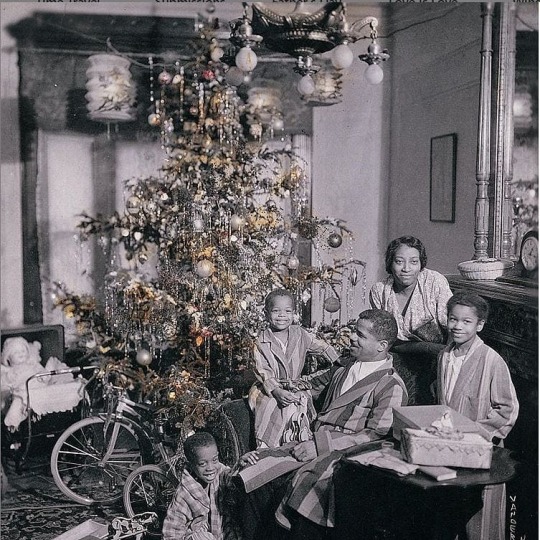
Merry Christmas and Happy Holidays! Photographe, James VanDerZee Christmas Morning 1933 Gift of the Sandor Family Collection, Chicago Courtesy of Donna Mussenden VanDerZee @studiomuseum This is a wonderful photo. I'm always enthralled and inspired by James VanDerZee's photography. Photo Credit @mygranddaddyscloset #vanderzee #vintagephotography #christmas #happyholidays #africanamericanhistory #africanamericanphotographer #africanamericanfamily (at Vivian Vintage 8) https://www.instagram.com/p/B6g6fWsgrJB/?igshid=dh4538krtuk1
#vanderzee#vintagephotography#christmas#happyholidays#africanamericanhistory#africanamericanphotographer#africanamericanfamily
1 note
·
View note
Photo

https://americanart.si.edu/artwork/ggg-photo-studio-christmas-33970
James VanDerZee, GGG Photo Studio at Christmas, 1933, gelatin silver print with applied color, Smithsonian American Art Museum, Museum purchase through the Julia D. Strong Endowment and the Smithsonian Institution Collections Acquisition Program, 1994.57.4
In the GGG Photo Studio, children gather around a luminous Christmas tree for a festive group portrait. Every child proudly holds a neatly wrapped package, a sign of uncommon prosperity in the year 1933. Two iridescent curtains frame a peaceful scenic backdrop to create a sophisticated environment for this special occasion. After he developed the photograph, VanDerZee applied specks of gold paint, adding pizazz to the sepia-toned print.
VanDerZee was Harlem’s resident photographer for more than six decades. During his heyday he photographed every aspect of community life: weddings, funerals, family portraits, church groups, athletic clubs, and even local celebrities. Notably, he served as the official photographer for Marcus Garvey’s Universal Negro Improvement Association. VanDerZee took great care to create an elegant environment for his subjects, using elaborate backdrops, props, and costumes, as well as extensive retouching.
A Democracy of Images: Photographs from the Smithsonian American Art Museum, 2013 Title GGG Photo Studio at Christmas Artist
James VanDerZee
Date 1933 Location Not on view Dimensions sheet: 8 x 10 in. (20.3 x 25.4 cm.) Credit Line
Smithsonian American Art Museum
Museum purchase through the Julia D. Strong Endowment and the Smithsonian Institution Collections Acquisition Program
Mediums Description gelatin silver print with applied color Classifications
Photography
Photoprint
Keywords
Ethnic – African-American
Cityscape – New York – New York
Ceremony – holiday – Christmas
Children
Object Number 1994.57.4 Palette
Linked Open Data
Linked Open Data URI
0 notes
Photo

Black art Tuesday. Here is one of my books that highlights Black visual artist, photographer James VanDerZee. Enjoy! . FOLLOW 👉🏾 @doriansbookshelf to see more from my shelf. . #coffeetablebooks #artdiscover #art_dailydose #artfollow #dailyarts #arts_promote #artlovers #blackarts #blackartamerica #artists #harlemrenaissance #harlemrenaissanceart #art #followart #african #bibliophile #booksbooksbooks #bookcommunity #bookstagrammer #goodreads #photographer #photography #ipreview via @preview.app https://www.instagram.com/p/B6LMXtojnI_/?igshid=xvuwtawwo281
#coffeetablebooks#artdiscover#art_dailydose#artfollow#dailyarts#arts_promote#artlovers#blackarts#blackartamerica#artists#harlemrenaissance#harlemrenaissanceart#art#followart#african#bibliophile#booksbooksbooks#bookcommunity#bookstagrammer#goodreads#photographer#photography#ipreview
0 notes
Text

Portrait of a Woman
Photography by James VanDerZee
1932
#James VanDerZee#art#artist#photography#Portrait of a Woman#beautiful#Photography by James VanDerZee
33 notes
·
View notes
Photo
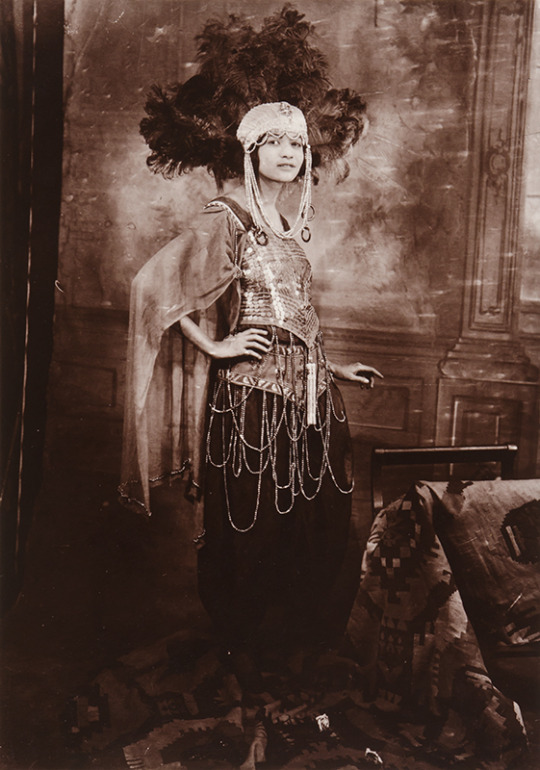
Harlem Renaissance - James VanDerZee Photography - 40 Trading Cards Book Set - Available Now to Order: https://www.etsy.com/listing/553794670/harlem-renaissance-james-vanderzee
0 notes
Photo

1932 Photo by James Van DerZee, laid into "The Picture Taking Man," a biography of the famous Harlem Renaissance photographer. "When the 'Harlem on My Mind' show opened at the Metropolitan Museum in1968, the photographs of James Van DerZee we're a revelation, and not simply because they showed black people of comfort, beauty, and pride, whom few Americans knew anything about. The photographs marked the 'discovery' of a new American master -- a neighborhood photographer who had recorded more than half a century of black history. Moreover, he had made his photographs not to be famous or remembered, but simply to do the best work he could for the people who came into his studio." #photography #AfricanAmerican #blackhistory #harlem #harlemrenaissance #blackandwhite #photographs #jamesvanderzee #vanderzee #biography #photos #cascadebooksellers #americanhistory
#biography#photographs#cascadebooksellers#blackhistory#photography#vanderzee#americanhistory#blackandwhite#africanamerican#jamesvanderzee#harlem#photos#harlemrenaissance
0 notes
Text


Jean-Michel Basquiat
Photography by James VanDerZee
Gelatin silver print, 1982
18 notes
·
View notes
Photo
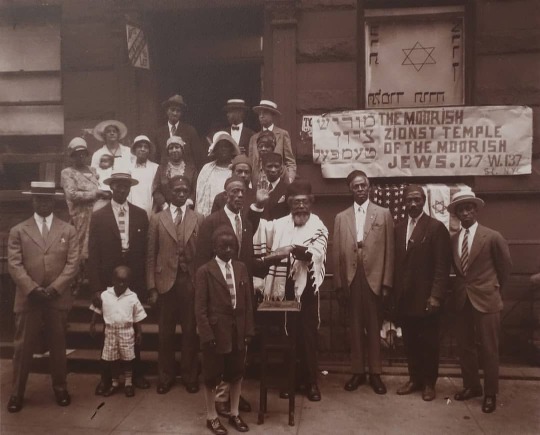
James Van Der Zee (1886 - 1983) Black Jews, Harlem, 1926 Gelatin Silver Print Mounted on Cardstock Printed in 1974, Edition of 75 7 ½ x 9 3/8 in. (Image) 12 ½ x 15 in. (Mount) ~ Van der Zee has a way presenting unique groups within the African American community during the Harlem Renaissance. This photograph shows the Moorish Jewish congregation standing proudly outside their place of worship. The man with his right hand raised is Rabbi Mordecai Herman. A pioneering spiritual leader who believed Judaism is an evolving religious civilization and led the Moorish Zionist Temple in Harlem. They all have each other's best interest in mind, they all have common goals of the future, and at this moment, they all have their gaze on James Van der Zee and his camera lens. James Van der Zee was born June 29, 1886 in Lenox Massachusetts. Driven purely by passion, he started his interest in photography as a young teen, and continued to practice his craft as a hobby while working odd jobs to support his family in adulthood. During the golden age of the Harlem Renaissance, his portraits and photographs show the excellence of the African American figures of that time. Whether he took photos of families, funeral arrangements, groups of children, athletes or celebrities, he showed all of his subjects with a sense of regal sophistication and class. ~ #billhodgesgallery #gallery #nycgallery #artgallery #africanamericanartist #supportminorityartists #supportthearts #artworld #billhodges #billhodgesgallery #africanamerican #africanamericanart #blackartist #blackartists #africanamericanartist #africanamericanartists #blackexcellence #jamesvanderzee #vanderzee #vanderzeephotograph #photograph #gelatinsilverprint #gelatinsilver #blackjews #moorishjews #moorishzionisttemple https://www.instagram.com/p/B6te-a5lrev/?igshid=1fz1e2ificnge
#billhodgesgallery#gallery#nycgallery#artgallery#africanamericanartist#supportminorityartists#supportthearts#artworld#billhodges#africanamerican#africanamericanart#blackartist#blackartists#africanamericanartists#blackexcellence#jamesvanderzee#vanderzee#vanderzeephotograph#photograph#gelatinsilverprint#gelatinsilver#blackjews#moorishjews#moorishzionisttemple
0 notes
Photo
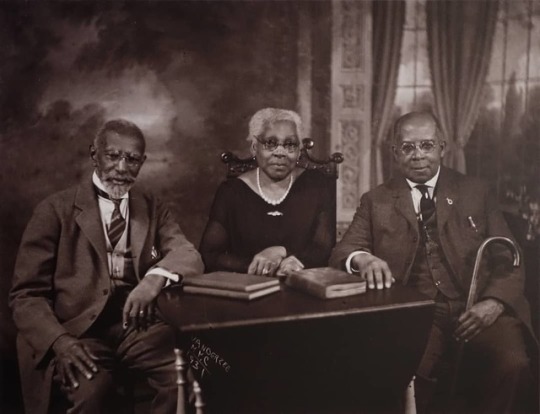
James Van Der Zee (1886-1983) Two Brothers and Their Sister, Harlem, 1931 Printed in 1974, Edition of 75 Gelatin Silver Print 7 ⅛ x 9 ⅜ (Image) 12 ½ x 15 in. (Mount) ~ Van Der Zee is known for his portraits of prominent Civil Rights icons and celebrities but he earned his career with his iconic portraits of Harlem families and characters. This portrait Two Brothers and Their Sister celebrates family, Black heritage and history. This is a precious work since most families during the early 20th century could not afford a portrait and most of Van Der Zee's clientele were Harlem's elite. Two Brothers and Their Sister is a rare, editioned work from Eighteen Photographs, a compilation of works that span James Van Der Zee's entire career. James Van Der Zee was born June 29, 1886 in Lenox Massachusetts. He started his interest in photography as a young teen, and continued to practice his craft alongside working odd jobs to support his family in adulthood. During the golden age of the Harlem Renaissance, his portraits and photographs show the excellence of the African American figures of that time. But whether it was photos of families, funeral arrangements, groups of children, athletes or celebrities, Van Der Zee portrayed all of his subjects with sophistication and class. ~ #art #arts #nycarts #fineart #artist #billhodgesgallery #gallery #nycgallery #artgallery #africanamericanartist #supportminorityartists #supportthearts #artworld #billhodges #africanamerican #africanamericanart #blackartist #africanamericanartist #africanamerican #blackexcellence #harlem #harlemrenaissance #vanderzee #jamesvanderzee #silverprint #gelatinsilver #gelatinsilverprint #familyportrait https://www.instagram.com/p/B27j8lCFgQX/?igshid=1mg66ue112kde
#art#arts#nycarts#fineart#artist#billhodgesgallery#gallery#nycgallery#artgallery#africanamericanartist#supportminorityartists#supportthearts#artworld#billhodges#africanamerican#africanamericanart#blackartist#blackexcellence#harlem#harlemrenaissance#vanderzee#jamesvanderzee#silverprint#gelatinsilver#gelatinsilverprint#familyportrait
0 notes
Photo

James Van Der Zee (1886 - 1983) A Parade Going South on 7th Avenue at 139th Street, Harlem, 1917, Printed in 1982 Gelatin Silver Print 11 x 15 in. ~ Harlem provided James Van Der Zee with a multitude of subjects, inspiration and entertainment. This photograph, taken just four blocks from Van Der Zee’s studio, captures the serendipitous nature of life in upper Manhattan, with its tilted composition and candid nature. It is assumed that this parade is in celebration of the fraternal organization Odd Fellows and that this work is from an incomplete portfolio titled “Views of America”. James Van Der Zee (b. 1886 - d. 1983) was an American photographer best known for his iconic portraits of the African-American middle-class and his enchanting scenes of daily life in Harlem. He began photography after winning a camera for selling sachets as a teenager. Later he got a job as a darkroom assistant in 1909 and in 1916 he opened his own studio where he took pictures of Harlem’s blossoming middle-class, neighborhood characters, daily life and celebrations. His work reached new heights when it featured in The Metropolitan Museum’s 1969 show, Harlem on my Mind. ~ #art #arts #nycarts #fineart #artist #billhodgesgallery #gallery #nycgallery #artgallery #africanamericanartist #supportminorityartists #supportthearts #artworld #billhodges #africanamerican #africanamericanart #blackartist #africanamericanartist #africanamerican #blackexcellence #harlem #harlemrenaissance #vanderzee #jamesvanderzee #silverprint #gelatinsilver #gelatinsilverprint #parade #blackandwhitephotography https://www.instagram.com/p/B04P-TcFbi4/?igshid=1wjzekgnbv25
#art#arts#nycarts#fineart#artist#billhodgesgallery#gallery#nycgallery#artgallery#africanamericanartist#supportminorityartists#supportthearts#artworld#billhodges#africanamerican#africanamericanart#blackartist#blackexcellence#harlem#harlemrenaissance#vanderzee#jamesvanderzee#silverprint#gelatinsilver#gelatinsilverprint#parade#blackandwhitephotography
0 notes
Photo

James Van Der Zee (1886-1983) Atlantic City, 1930 Printed in 1974, Edition of 75 Gelatin Silver Print 6 ½ × 3 ⅞ in. (photograph) 15 x 12 ½ in. (mount) ~ James Van Der Zee captures here a day at the beach at a classic east coast hangout - Atlantic City. Three reclining woman are posed at the forefront in their swimwear while a mischievous buddy sneaks up from behind, adding suspense and playfulness. Though this portrait was taken on a segregated beach, the burden of discrimination took a vacation that day as clusters of beach folk in various attires are seen behind the group, enjoying the sun. A wonderfully convivial and candid moment. James Van Der Zee (b. 1886 - d. 1983) was an American photographer best known for his iconic portraits of the African-American middle-class and his enchanting scenes of daily life in Harlem. Van Der Zee began photography after winning a camera for selling sachets as a teenager. He got a job as a darkroom assistant in 1909 and in 1916 he opened his own studio where he took pictures of Harlem’s blossoming middle-class, neighborhood characters, daily life and celebrations. His work reached new heights when they were featured in The Metropolitan Museum’s 1969 show, Harlem on my Mind. ~ #art #arts #nycarts #fineart #artist #billhodgesgallery #gallery #nycgallery #artgallery #africanamericanartist #supportminorityartists #supportthearts #artworld #billhodges #africanamerican #africanamericanart #blackartist #africanamericanartist #africanamerican #blackexcellence #harlem #harlemrenaissance #vanderzee #jamesvanderzee #silverprint #gelatinsilver #gelatinsilverprint https://www.instagram.com/p/B0mJ0o8ly0E/?igshid=183z6coi955hz
#art#arts#nycarts#fineart#artist#billhodgesgallery#gallery#nycgallery#artgallery#africanamericanartist#supportminorityartists#supportthearts#artworld#billhodges#africanamerican#africanamericanart#blackartist#blackexcellence#harlem#harlemrenaissance#vanderzee#jamesvanderzee#silverprint#gelatinsilver#gelatinsilverprint
0 notes
Text
James Van Der Zee
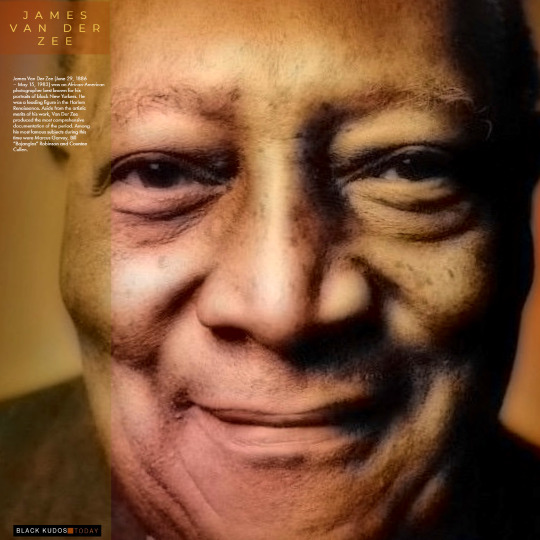
James Van Der Zee (June 29, 1886 – May 15, 1983) was an American photographer best known for his portraits of black New Yorkers. He was a leading figure in the Harlem Renaissance. Aside from the artistic merits of his work, Van Der Zee produced the most comprehensive documentation of the period. Among his most famous subjects during this time were Marcus Garvey, Bill "Bojangles" Robinson and Countee Cullen.
Biography
Born in Lenox, Massachusetts, James Van Der Zee demonstrated an early gift for music, and was initially aspired to career as a professional violinist. Van Der Zee's second interest was in photography. He bought his first camera when he was a teenager, and improvised a darkroom in his parents' home. He took hundreds of photographs of his family as well as his hometown of Lenox. Van Der Zee was one of the first people to provide an early documentation of his community life in small town New England.In 1906, he moved with his father and brother to Harlem in New York City, where he worked as a waiter and elevator operator. By now Van Der Zee was a skilled pianist and aspiring professional violinist. He would become the primary creator and one of the five performers in a group known as the Harlem Orchestra.In 1915, he moved to Newark, New Jersey, where he took a job in a portrait studio, first as a darkroom assistant and then as a portraitist. He returned to Harlem the following year, just as large numbers of Black immigrants and migrants were arriving into that part of the city. He set up a studio at the Toussaint Conservatory of Art and Music with his sister, Jennie Louise Van de Zee, also known as Madame E Toussaint, who had founded the conservatory in 1911.
In 1916, he and his second wife, Gaynella Greenlee, launched the Guarantee Photo Studio on West 125th Street in Harlem. His business boomed during World War I, and the portraits he shot from this period until 1945 have demanded the majority of critical attention. In 1919, he photographed the victory parade of the returning 369th Infantry Regiment, a predominantly African American unit sometimes called the "Harlem Hellfighters."
During the 1920s and 1930s, he produced hundreds of photographs recording Harlem's growing middle class. Its residents entrusted the visual documentation of their weddings, funerals, celebrities and sports stars, and social life to his carefully composed images. Quickly Van Der Zee became the most successful photographer in Harlem. Among his many renowned subjects were poet Countee Cullen, dancer Bill (“Bojangles”) Robinson, Charles M. "Daddy" Grace, Joe Louis, Florence Mills, and black nationalist leader Marcus Garvey. By the early 1930s Van Der Zee found it harder to make an income from his work in photography, partly because of the strained economic circumstances of many of his customers and partly because the growing popularity of personal cameras reduced the need for professional photography.
Van Der Zee worked predominantly in the studio and used a variety of props, including architectural elements, backdrops, and costumes, to achieve stylized tableaux vivant in keeping with late Victorian and Edwardian visual traditions. Sitters often copied celebrities of the 1920s and 1930s in their poses and expressions, and he retouched negatives and prints heavily to achieve an aura of glamour. He also created funeral photographs between the wars. These works were later collected in The Harlem Book of the Dead (1978), with a foreword by Toni Morrison. James Van Der Zee died in Washington, D.C. on May 15, 1983. Ten years later the National Portrait Gallery exhibited his work as a posthumous tribute to his remarkable genius.
Works
Commission from UNIA
In the spring and summer of 1924, Van Der Zee worked to document the members and activities of Marcus Garvey's Universal Negro Improvement Association (UNIA). He took thousands of photographs on this assignment, some of which were featured in a calendar issued to members in 1925.
Fulfilling Garvey's wishes, Van Der Zee's job was to project a positive image of the Association, especially to emphasize the strength and social standing of its membership, the so-called Garveyites. Nowhere in Van Der Zee's visual record was there any hint of the controversy surrounding Garvey in the early 1920s, a period when the leader was subject to public interrogation, quarrels with the writer and philosopher W.E.B. DuBois, and legal proceedings against him on charges of mail fraud.
Harlem on My Mind
In 1969, Van Der Zee gained worldwide recognition when his work was featured in the exhibition Harlem on My Mind at the Metropolitan Museum of Art in New York. His inclusion in the exhibition was somewhat by accident. In December 1967, a researcher for the exhibition (and a photographer in his own right), Reginald McGhee, came across Van Der Zee's Harlem studio and asked if he happened to have any photographs from the 1920s and 30s.
In a story recounted by photo historian Rodger C. Birt, Van Der Zee showed him the boxes and boxes of negatives he had kept from this period. These photographs would become the core of Harlem on My Mind—and the feature of the exhibit that critics routinely praised as the show's biggest revelation. As art historian Sharon Patton observed, Van Der Zee not only documented the Harlem Renaissance, but also helped create it.
Harlem on My Mind marked a controversy between the Met and a number of practicing artists then living and working and Harlem. Painters including Romare Bearden and Benny Andrews protested the show for its emphasis on social history and experience, at the expense—as they viewed it—of interest in the artistic legacy of black New York artists. On opening day, a picket line formed in front of the Met. Andrews carried a sign reading: "Visit The Metropolitan Museum of Photography."
Photographic techniques and artistry
Works by Van Der Zee are artistic as well as technically proficient. His work was in high demand, in part due to his experimentation and skill in double exposures and in retouching negatives of children. One theme that recurs in his photographs was the emergent black middle class, which he captured using traditional techniques in often idealistic images. Negatives were retouched to show glamor and an aura of perfection. This affected the likeness of the person photographed, but he felt each photo should transcend the subject.
His carefully posed family portraits reveal that the family unit was an important aspect of Van Der Zee's life. "I tried to see that every picture was better-looking than the person ... I had one woman come to me and say 'Mr. VanDerZee my friends tell that's a nice picture, but it doesn't look like you.' That was my style", said VanDerZee. Van Der Zee sometimes combined several photos in one image, for example by adding a ghostly child to an image of a wedding to suggest the couple's future, or by superimposing a funeral image upon a photograph of a dead woman to give the feeling of her eerie presence. Van Der Zee said, "I wanted to make the camera take what I thought should be there."
Van Der Zee was a working photographer who supported himself through portraiture, and he devoted time to his professional work before his more artistic compositions. Many famous residents of Harlem were among his subjects. In addition to portraits, Van Der Zee photographed organizations, events, and other businesses.
0 notes